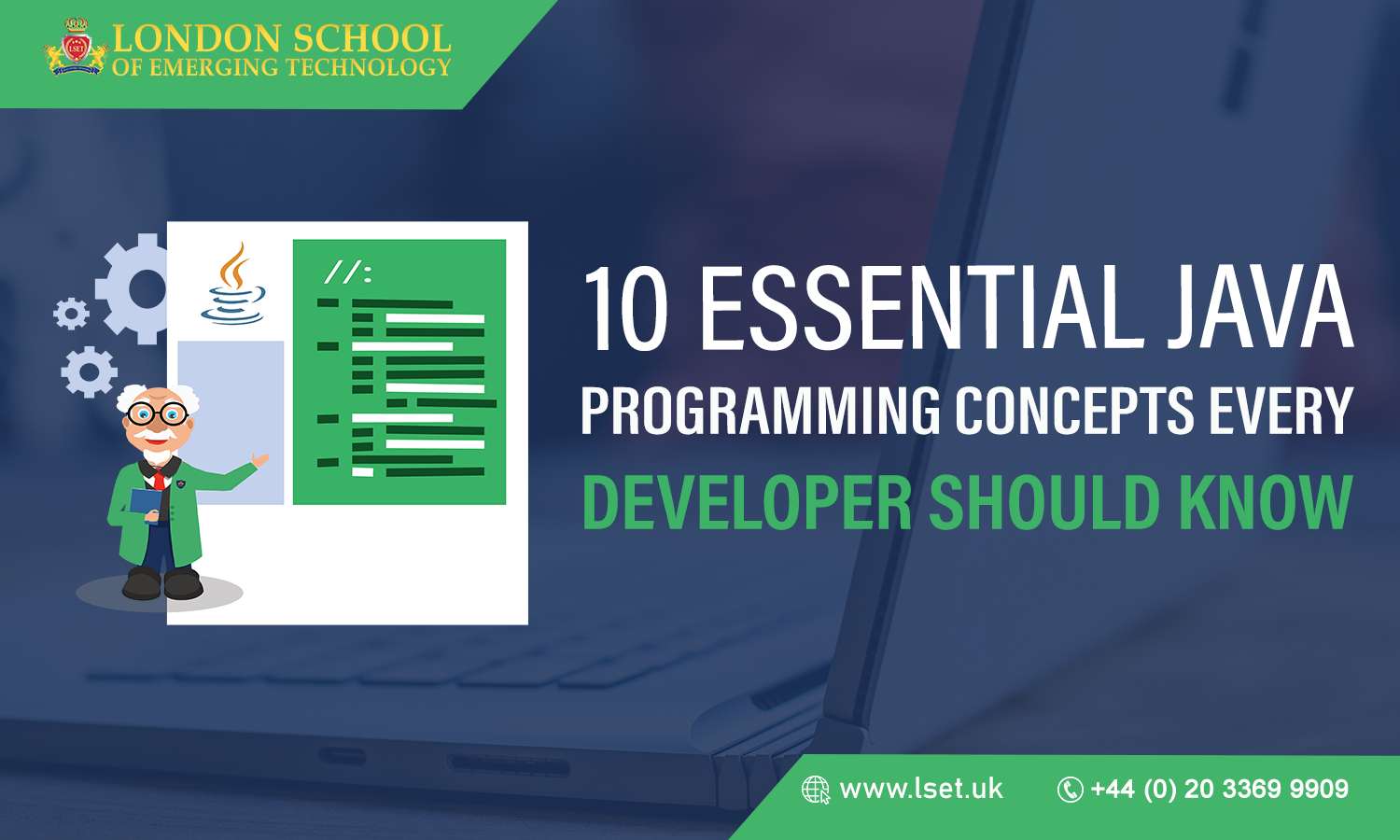Java is a powerful programming language that has existed for over two decades and is still going strong. It’s widely used for building enterprise applications, mobile apps, games, and more. Whether you’re an experienced developer or just starting, there are some essential Java programming concepts that you need to master to be successful. In this article, we’ll explore 10 of the most important Java programming concepts you need to know.
Java programming language basics
Before you start writing Java code, you need to understand the programming language basics. Java is a high-level, object-oriented programming language that is easy to learn and use. It’s also a platform-independent language, meaning you can write Java code once and run it on any platform that supports Java. In Java, everything is an object, and everything is based on classes and objects. Java programs comprise classes and methods; you can create objects from these classes to perform various tasks.
One of the most important features of Java is its memory management system. Java uses a garbage collector to automatically free up memory that is no longer needed by the program. This makes Java programs more efficient and less prone to memory leaks than programs written in other languages. Another important feature of Java is its exception-handling system, which allows you to handle errors and exceptions in a structured way.
Object-oriented programming in Java
Object-oriented programming is a programming paradigm that is based on the concept of objects. In Java, everything is an object, and object-oriented programming is at the core of the language. Object-oriented programming allows you to create reusable code, organise your code into manageable modules, and design your programs more intuitively and naturally.
In Java, you can create classes that define objects and create objects from these classes to perform various tasks. Each object has its own attributes and behaviours, and you can interact with them by calling their methods. Java also supports inheritance, which allows you to create new classes based on existing classes, and polymorphism, which will enable you to create objects that can take on multiple forms.
Arrays and collections in Java
Arrays and collections are two important concepts in Java programming. An array is a collection of elements of the same data type, and it’s used to store a fixed number of elements. Arrays are useful for storing data that needs to be accessed in a specific order, such as the elements of a list or the pixels of an image.
Collections, on the other hand, are more flexible than arrays. They are used to store a variable number of elements, and they can be resized as needed. Java provides several built-in collection classes, such as ArrayList, LinkedList, and HashMap, that you can use to store and manipulate collections of objects.
File input/output in Java
File input/output is another important concept in Java programming. Java provides several classes that you can use to read from and write to files, such as FileReader, FileWriter, and BufferedReader. These classes allow you to read and write text and binary data to files on your computer.
File input/output is helpful for many tasks, such as reading configuration files, writing log files, and serialising and deserialising objects. Java also supports working with directories, file paths, and file permissions.
Multithreading in Java
Multithreading is the ability of a program to execute multiple threads simultaneously. Multithreading is important for improving the performance of your Java programs, especially for programs that perform long-running tasks or need to perform multiple tasks simultaneously.
Java provides built-in support for multithreading, and it’s easy to create and manage threads in Java. You can create threads by extending the Thread class or by implementing the Runnable interface, and you can use synchronisation to ensure that multiple threads don’t access shared resources simultaneously.
Java development tools and resources
Many tools and resources are available for Java developers, and it’s important to know which ones to use to be productive and efficient. Some popular Java development tools include Eclipse, NetBeans, and IntelliJ IDEA. These tools provide a complete development environment for Java, including code editors, debuggers, and build tools.
Java developers also have access to a wide range of libraries, frameworks, and APIs that can help them build better programs faster. Some popular Java libraries and frameworks include Spring, Hibernate, and Apache Struts. These tools provide database integration, web application development, and object-relational mapping features.
Conclusion
Java is a powerful programming language that has stood the test of time. Whether you’re building enterprise applications, mobile apps, or games, Java has the flexibility and power to meet your needs. By mastering the essential Java programming concepts explored in this article, you’ll be better equipped to write better code, build more efficient programs, and take your Java skills to the next level. So start exploring the world of Java programming today!

